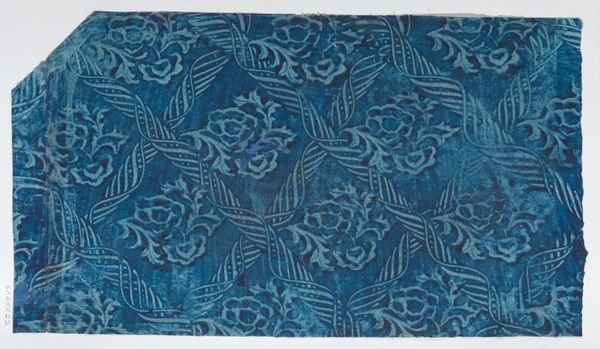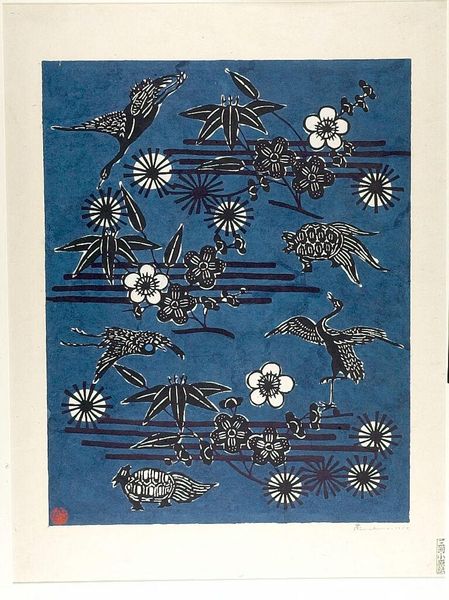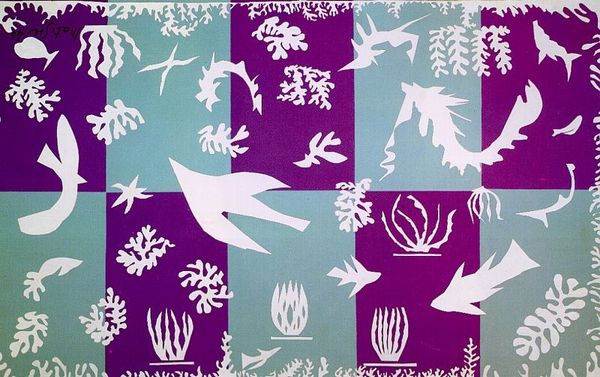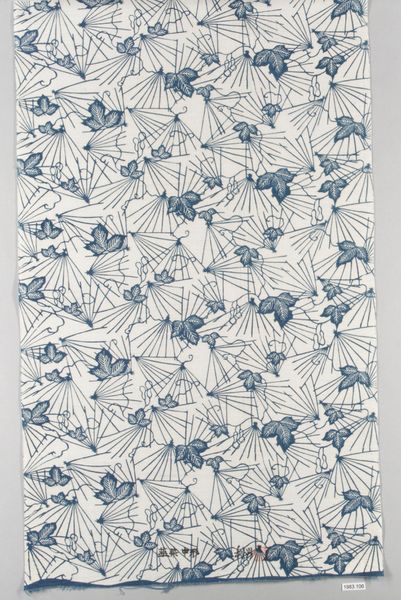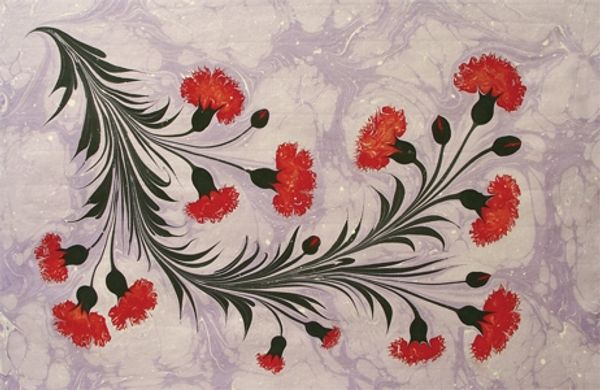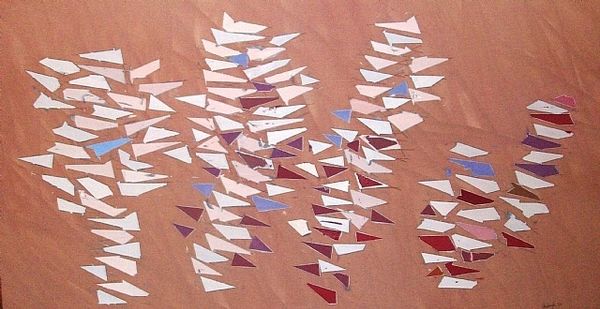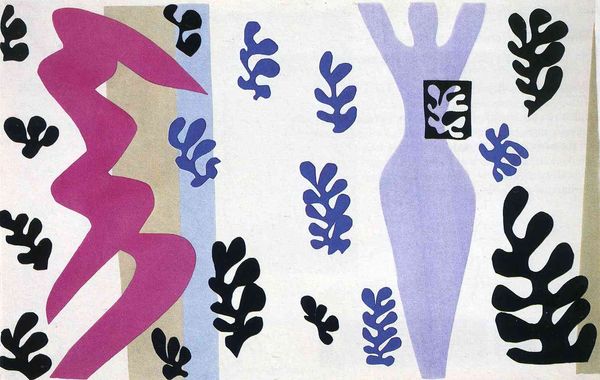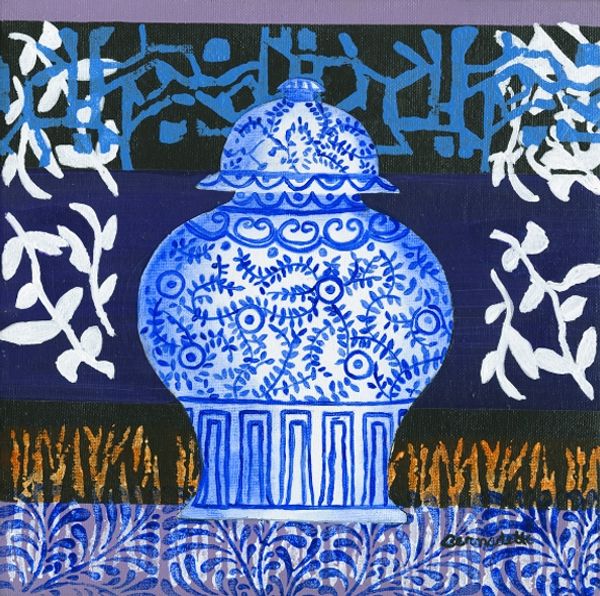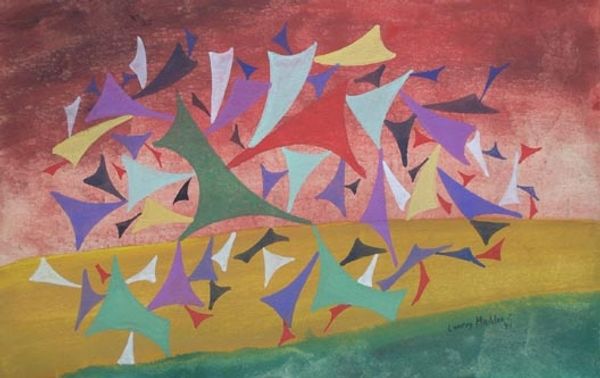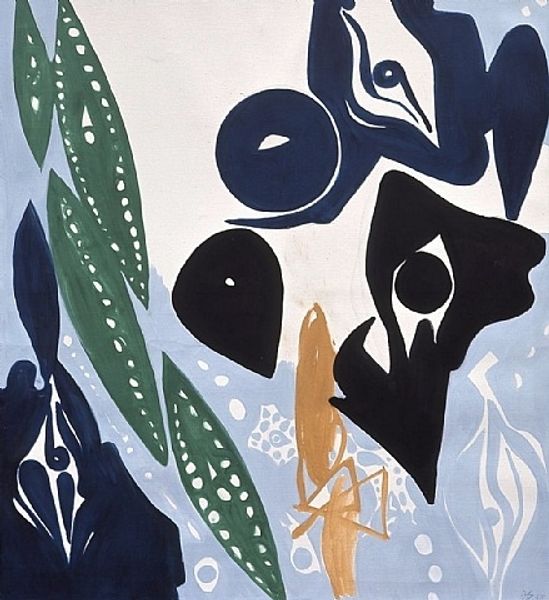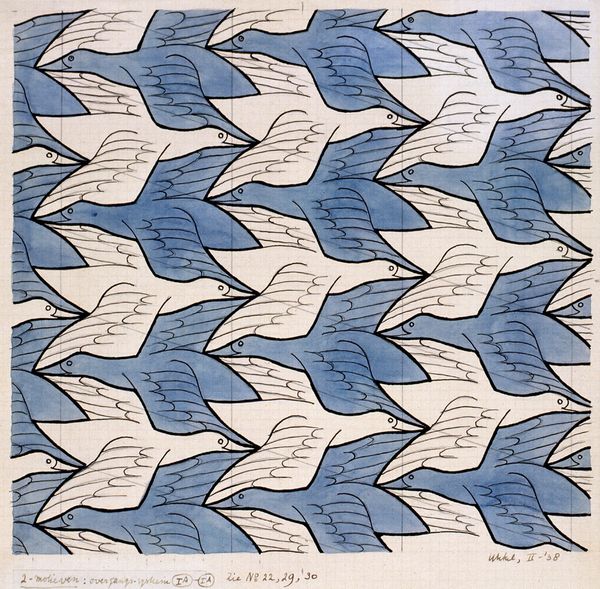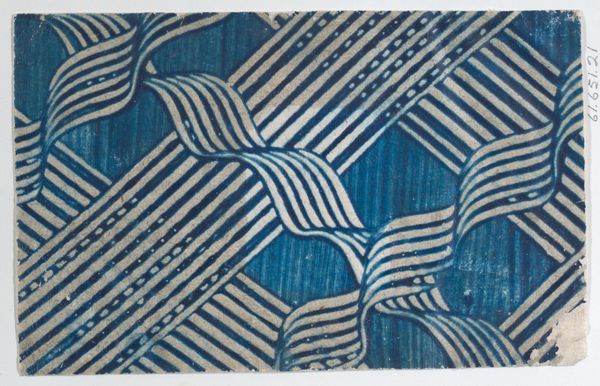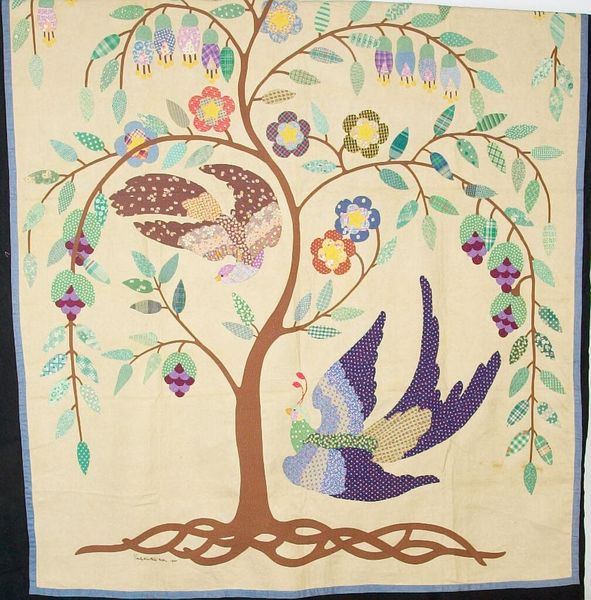
painting, acrylic-paint
#
painting
#
pattern
#
acrylic-paint
#
intimism
#
geometric
#
abstraction
#
modernism
Dimensions: 196 x 312 cm
Copyright: Henri Matisse,Fair Use
Editor: We’re looking at Henri Matisse's "Polynesia, the Sky," created in 1946 using acrylic paint. It's a vibrant scene with a lot of striking blue and white shapes. I’m really drawn to the playful pattern-like arrangement, almost like wallpaper. What historical factors influenced Matisse when he made this piece? Curator: That's a keen observation. After the Second World War, there was a profound shift in artistic expression. Artists were moving towards abstraction. Matisse, confined to his bed after surgery, turned to paper cut-outs to capture a sense of freedom and escape. “Polynesia, The Sky,” showcases this vividly; note that, like many artists and intellectuals after periods of crisis, he looks outward, taking inspiration from places like Polynesia that represented a life free of war. How do you think the societal mood influenced his approach to representation? Editor: I see what you mean. It’s like he’s not just showing us a sky, but the idea of freedom and escape. Are you saying that this work reflects an understanding of both the public’s appetite and yearning for change in the wake of global suffering? Curator: Precisely! He recognized the cultural desire to build new social foundations and personal healing through abstraction. Now, looking at the almost childish geometric shapes in "Polynesia, The Sky,” we can also understand this stylistic direction as an acknowledgement of the trauma endured by society’s youngest and most innocent members. Notice, even in this 'dreamscape,' Matisse doesn't attempt hyperrealism: can art still hold power and tell a narrative, even in abstract form? Editor: That's fascinating, I never thought of it that way, the abstraction and seeming simplicity are representative of looking at the world through innocent eyes. This piece reveals a surprising amount about art's connection to culture and history! Curator: Absolutely, by exploring these works, you understand the intrinsic role that galleries and museums play in mediating complex intersections between socio-political histories and our cultural heritage.
Comments
No comments
Be the first to comment and join the conversation on the ultimate creative platform.
